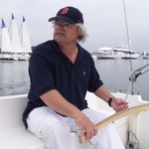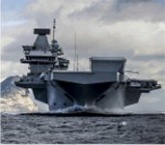Never content with leaving well enough alone, I have been working on more realistic movement rules that are simple enough to not slow the game down. What is the slowest part of the game in SOG? Thumbing through an E deck, looking for the maneuver you want. Here is a sneak peak of what I am working on.
[/ATTACH]
The idea is based on the three "winds" in SOG. I defined these as light breeze, medium breeze, and strong breeze, which, in the Beaufort scale, represents 2, 4 and 6. You can have one of three types of sails. Instead of backing sails, you have "light sails", Battle sails, and Full sails. The track below each breeze category is your actual speed in knots. When you turn into the red zone on your ship, your speed is halved, staying one more turn means you are taken aback. Here's the best part: you don't need a dozen movement cards per ship. It's just a sneak peek, so stay tuned.






 Reply With Quote
Reply With Quote







Bookmarks